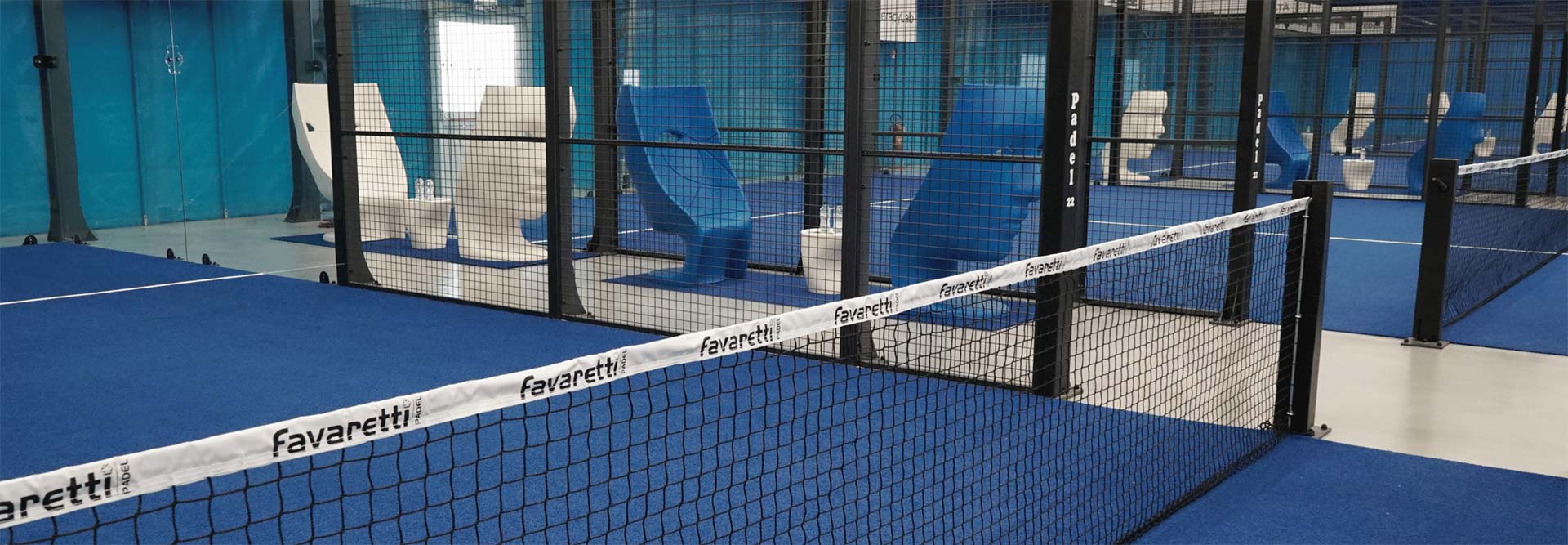In the same way as when you decide to build a house and you rely on specialized architects, when you decide to build a padel court, it is essential that you rely on professionals in the field. This complex process involves the consideration of multiple factors, including materials, regulations, and design. Even the smallest mistake can significantly affect the end result.
Each field has fundamental features, but many of them can be customized to meet individual needs and tastes. By turning to experts of the caliber of Favaretti Padel, you can benefit from a tailored service that allows you to choose the most suitable model based on personal preferences and desired playing experiences.
How to get certifications for an approved Padel court?
Padel courts are not all the same: they can either be open or equipped with Padel covers so that they can be used in all year round.
In order for courts to be homologated and to be able to host top level professional Padel tournaments, the following aspects must be taken into account:
Organizing the space for a padel court: dimensions and guidelines
The first fundamental aspect to take into account when designing a padel court is the space it will occupy and the number of courts you intend to build, in order to best organize the area dedicated to this type of facility.
For a padel court to be considered up to standard, as defined by the FITP, it must have an area of 20×10 m. The rectangular court is divided in two by a net, and parallel to it are the service lines, located at a distance of 6.95 meters on both sides. Each padel court also has a central service line that divides the court perpendicular to the net.
How long should the net of a padel court measure?
The net of a padel court is a key element that must meet strict regulations to ensure fair and safe play. The technical specifications regarding the dimensions of the net are precise: it must have a length of 10 meters and aheight ranging from 0.88 meters at the center to 0.92 meters at the ends, with a maximum tolerance of only 0.5 centimeters. The meshes that make up the net are made of synthetic fiber, a material that offers strength and durability. It is important that the meshes are large enough to prevent the ball from passing through them during play.
Compliance and safety: walls in padel courts
The walls of a padel court should be at least 3 m high in the sides and 4 m high in the back.
For their construction, it is useful to refer to UNI 7697. The latter refers to building glass in multiple areas and does not sanction obligation. In fact, it indicates what the recommended choices are in terms of glazing type depending on the use to be made of it. Specifically, for padel walls, it is necessary to comply with the EN 12150-1 standard, which requires the use of sheets of at least 12mm. Favaretti Padel ensures compliance with these standards by using certified glass panels in order to ensure safety, reliability and resistance to the impacts involved in the game.
Inputs and structural requirements: padel court fencing
With regard to the fencing of padel courts, it is a key element from both a structural and safety point of view. Typically, a steel grating with a minimum height of 3 meters is adopted, equipped with two entrances located at the separation fence between the courts.
The entire structure, including the load-bearing steel frame and the crystals, must be designed and built in accordance with Italian construction regulations, as specified in NTC2018. It is essential that this design and construction process be entrusted exclusively to professionals in the field such as Favaretti Padel.
A padel court that does not comply with these standards exposes both the players and the managers or owners of the court to considerable risks.
The importance of safety in a certified padel court
To ensure player safety, it is essential to:
- design the court without protrusions, steps or roughness on the entire vertical surface of the court cage;
- cover the entrance posts and posts supporting the net with impact-resistant padded material;
- ensure uniform and adequate lighting throughout the game by employing artificial lighting systems.
Surfaces and roofing: other features of a padel court
The construction process includes building the slab and laying the mat, which forms the playing surface and floor. The mat is made of synthetic grass filled with quartz sand (10 to 15 kg/sqm depending on the type). There are different types, the most efficient and widely used is the textured version, which is characterized by a curled shape of the blades, thus ensuring a smooth playing experience in movement and the right grip.
Finally, the padel courts cover. This is an indispensable plus for a padel club that wants to allow its players to use the courts 365 days a year, whatever the weather outside.
In order to design and build a proper court, the help of experts in the field is a must. Favaretti Padel excels in this field, offering complete consulting from design to final club implementation. The only one of its kind in Europe, the company manufactures all the necessary elements for a padel club in-house, allowing for extensive customization and implementing turnkey projects.
